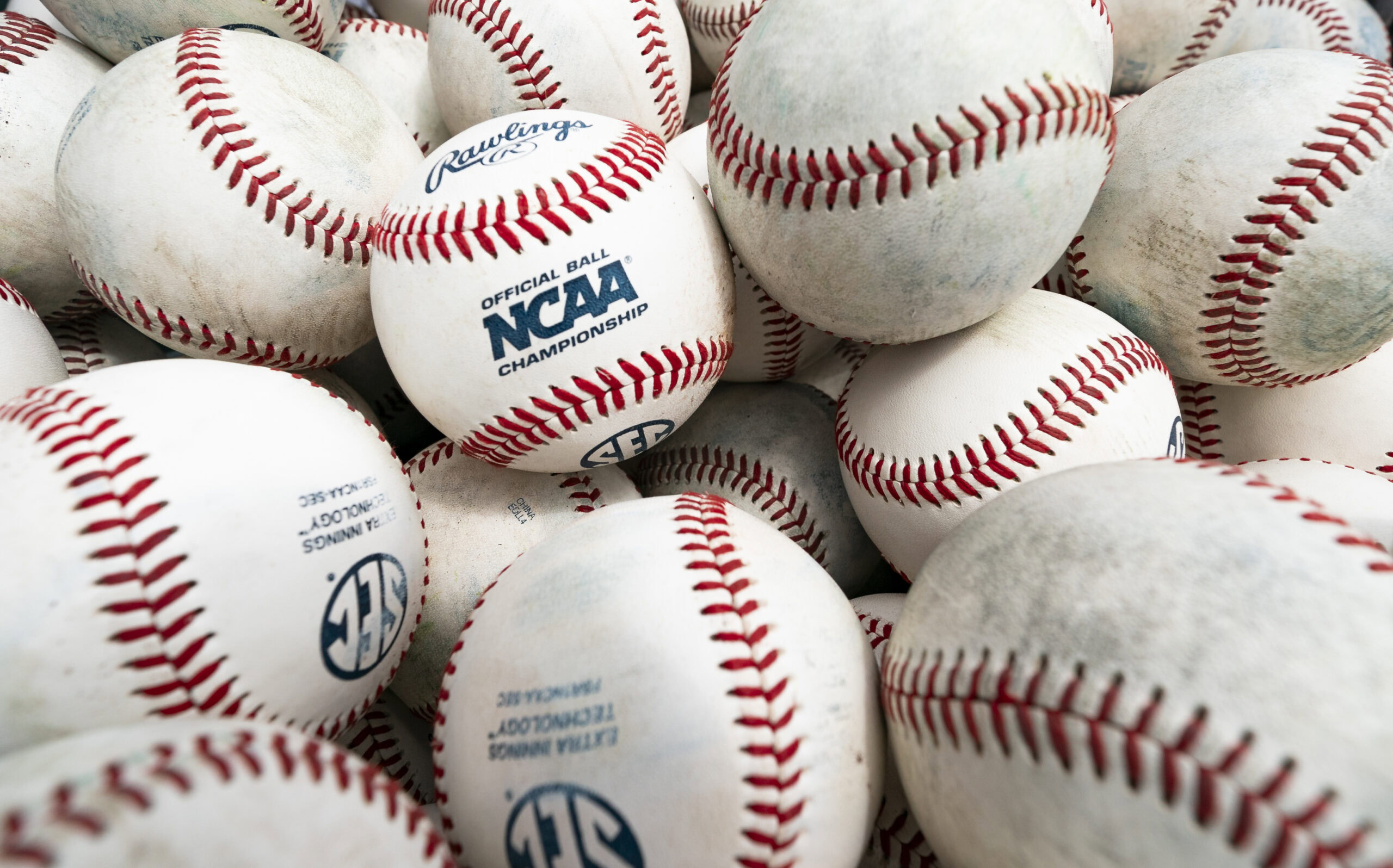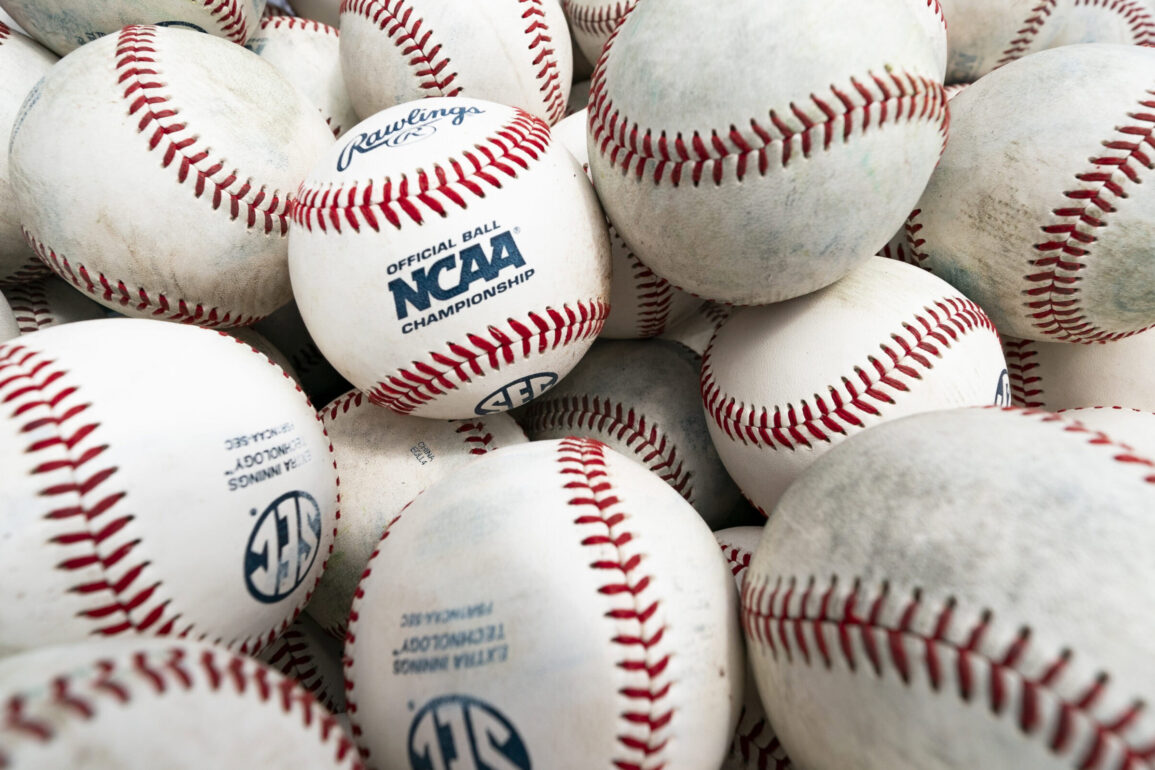
Image credit:
(Photo by Jay Biggerstaff/Getty Images)
A handful of college baseball’s most influential voices gathered Thursday beneath bright lights and in front of cameras as they do every year roughly 24 hours before the start of the College World Series to discuss the latest developments in the game and across the NCAA landscape.
Their message at this time last year was simple: College baseball had achieved new heights. Its popularity soaring, the caliber of talent on display earning monumental praise.
“College baseball, in my opinion,” said American Baseball Coaches Association executive director Craig Keilitz on the eve of the 2024 College World Series, “has never been better.”
That same optimism echoed again Thursday afternoon, nearly a year to the day later, at the annual ‘State of College Baseball’ press conference at Omaha’s Charles Schwab Field before the start of 2025 CWS on Friday.
The game is still more watched than ever. Its parity is thriving. And its best players continue to transform rapidly into major league talent.
But, this year, a cloud hovered over the celebration.
College baseball may still be in its golden era, but now, it’s navigating a legal and logistical minefield in the wake of the landmark House v. NCAA settlement.
Among the biggest changes: Beginning this fall, teams can increase their scholarship totals to a maximum of 34, more than doubling the maligned 11.7 limit.
For a sport that has long wrestled with roster inequities, the rule change could be revolutionary. But it also introduces a host of unanswered questions—and, potentially, unintended consequences.
Wealthier programs can now fully fund 34 scholarships, while others may struggle to approach that number, and some will hover around or below 11.7. In theory, the change promotes equity. In practice, it may deepen the gap between haves and have-nots.
“We’re nervous and ecstatic at the same time,” Keilitz said Thursday. “We fought to get a couple more scholarships, to possibly have 15 someday. And now to go to 34 maximum is incredible. But there’s some things that have to happen along with that.”
Among the questions that still need answering:
What’s coming isn’t just a numbers game—it could determine careers. Players who believed they had roster security may find themselves suddenly without a spot, victims of an evolving rulebook no one fully understands yet.
“I don’t think the schools know what they’re going to offer right now,” Keilitz said. “As they work through this, they’re trying to figure it out.”
One of the most pressing uncertainties surrounds the fate of players cut under the new limits.
Judge Claudia Wilken, who presided over the House case, recommended a “grandfathering” system allowing affected players to remain at their current school or transfer without counting against scholarship limits.
According to NCAA senior vice president of championships Anthony Holman, that proposal is gaining traction and should pass into legislation following a vote later this summer.
“The board still has to adopt that for our legislation,” Holman told Baseball America. “I think that’s a reasonable request, though. Our institutions seem to be open to good-faith efforts to say, ‘Hey, if there wasn’t a limit, Johnny, Jimmy and Paul would be on our roster. So, if they go somewhere else, they shouldn’t count against the number there, or if they stay here, same thing.’”
Whether there will be a limit on how many players a school can retain under those exceptions remains unknown.
“I don’t anticipate there will be (a limit),” Holman said, noting that restrictions could prove unnecessary given how many players might volunteer to stay on a stuffed roster.
Despite the haze, Keilitz urged programs to embrace the moment rather than fear it, echoing a message he first shared at the ABCA convention in January.
“We’ve got some incredible opportunities right now,” he said. “It’s up to us—all the ADs, the commissioners, certainly the NCAA and the law firms involved—to make it work.”
While college baseball’s profile has never been stronger, its infrastructure remains unsettled.
“It’s definitely a moving target,” Jay Artigues, chair of the Division I Baseball Committee, said. “But just embrace it and figure it out.”
Fixing The Transfer Portal Calendar
Perhaps the most pressing short-term concern is the chaos created by the overlap between the NCAA Tournament and the opening of the baseball transfer portal.
In what’s become an annual ritual of dysfunction, coaches are juggling roster calls from hotel lobbies and scouting meetings between portal pings.
Asked whether there had been thought about moving the portal window to the end of the season so that coaches could play out the entire season before having to think about moving their entire rosters, Holman’s response was direct and hopeful: The NCAA is actively working on it.
“There’s oversight committees for each sport and they may establish their own [windows],” Holman said. “That probably makes the most sense.”
Artigues was also on board.
“Years ago, the draft was going on during the College World Series and that was changed,” he said. “Yes, I do think that’s something to look into soon.”
It’s a seemingly simple fix, and one that has the potential to ease the burden on players and coaches alike during the sport’s most sacred stretch.
NCAA Tournament Expansion
If there was one theme that drew consensus on Thursday, it was a widespread interest in seeing the NCAA Tournament field expand beyond its current 64-team format.
But enthusiasm hasn’t translated into concrete plans. At least not yet.
“You are asking if we should expand the field,” Artigues said. “There’s always discussion about that.”
Artigues, who has roots in mid-major baseball as Southeastern Louisiana’s former head coach and current athletic director, offered his personal support.
“I love expanding it coming from a mid-major school,” he said. “If you see the success of the Murray States and some other mid-majors, it shows they can play with the big boys.”
But while the heart may say yes, the wallet—and the calendar—often say no.
“I don’t know what the value proposition is to that,” Holman said. “We lose money on regionals. The proposition of not garnering additional revenue and just adding expenses, in this day’s economic landscape, doesn’t make a whole lot of business sense.”
Keilitz echoed that dilemma.
“It’s like a great restaurant,” he said. “They expand, and then all of a sudden things fall apart on them. That’s something we always need to be very cognizant of.”
Still, the belief remains that plenty of deserving teams are being left out under the current system. It’s a reality that was reflected in this year’s field, which omitted Xavier and Connecticut, both of which had resumes that historically pointed to tournament inclusion.
This year’s results only added fuel to the debate: Four No. 4 seeds won opening games, and Murray State stormed into Omaha after dispatching Ole Miss and Duke. The argument for broader access has rarely felt stronger.
But the question, for now, is whether inclusion is worth the risk of altering a tournament structure that has become one of college sports’ most compelling.
“Anytime you add something to it, you run the risk of, to Craig’s point, messing up the recipe a little bit,” Holman said. “We’ve got a very robust championship. Our broadcast partners do a tremendous job. We’re fortunate to have the coverage that we have.”
A Path Forward
Despite the complications, this year’s College World Series offers plenty of reasons for optimism.
The field includes six conferences and an independent. No returners, no traditional powers and a team like Murray State, whose run through the Oxford Regional and Durham Super Regional captured the spirit of postseason chaos.
“This is a great example of young people playing for the name on the front of the jersey,” Holman said. “Money doesn’t always drive competition.”
Parity is alive. Passion is evident. And in spite of looming structural changes, college baseball’s stewards seem committed to preserving—and enhancing—a product that has never been more popular.
“I’m an internal optimist,” Keilitz said. “Now we are where we are and we need to make it work. And I’m bullish that we can make it work.”
This post was originally published on this site be sure to check out more of their content.









